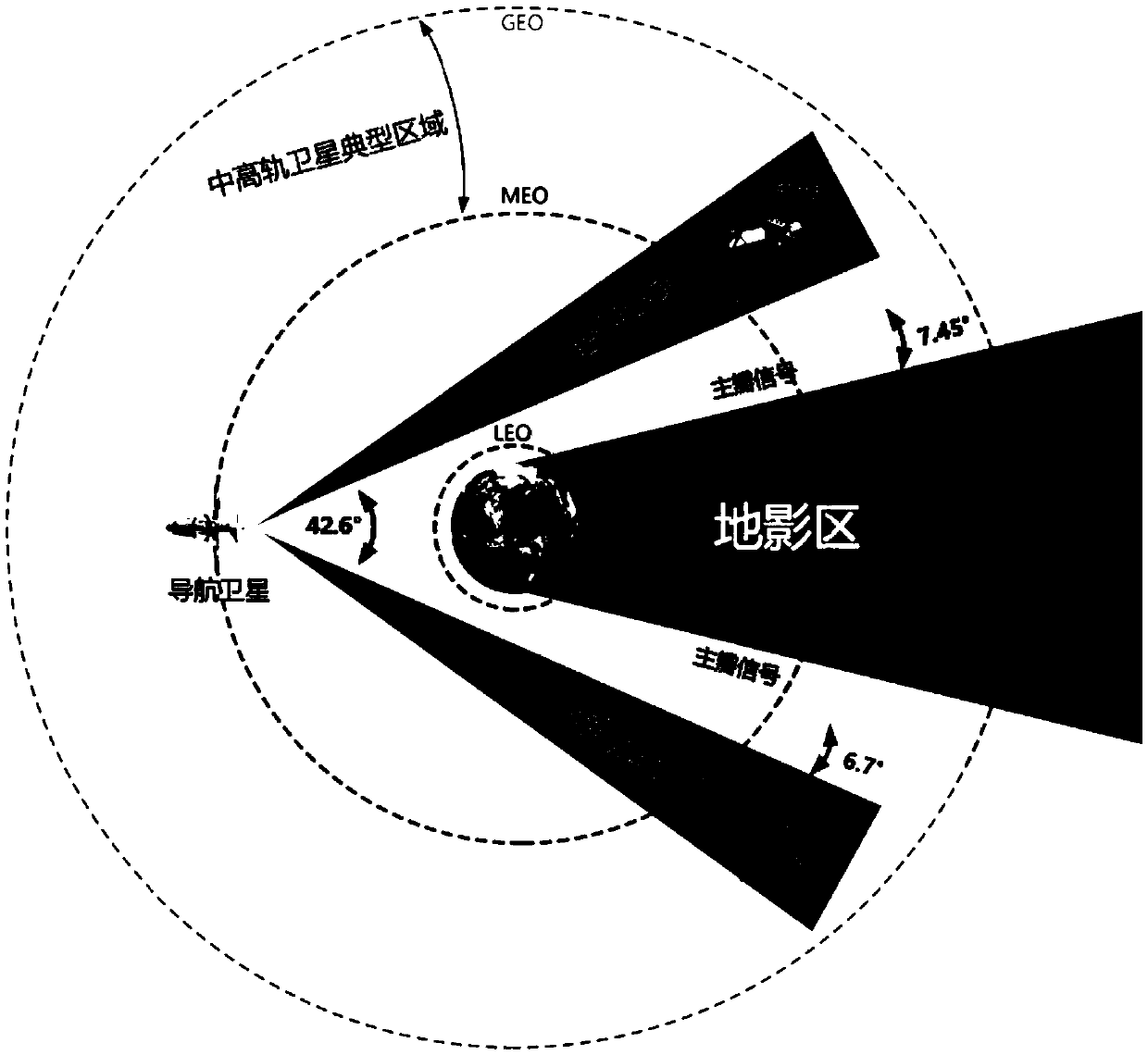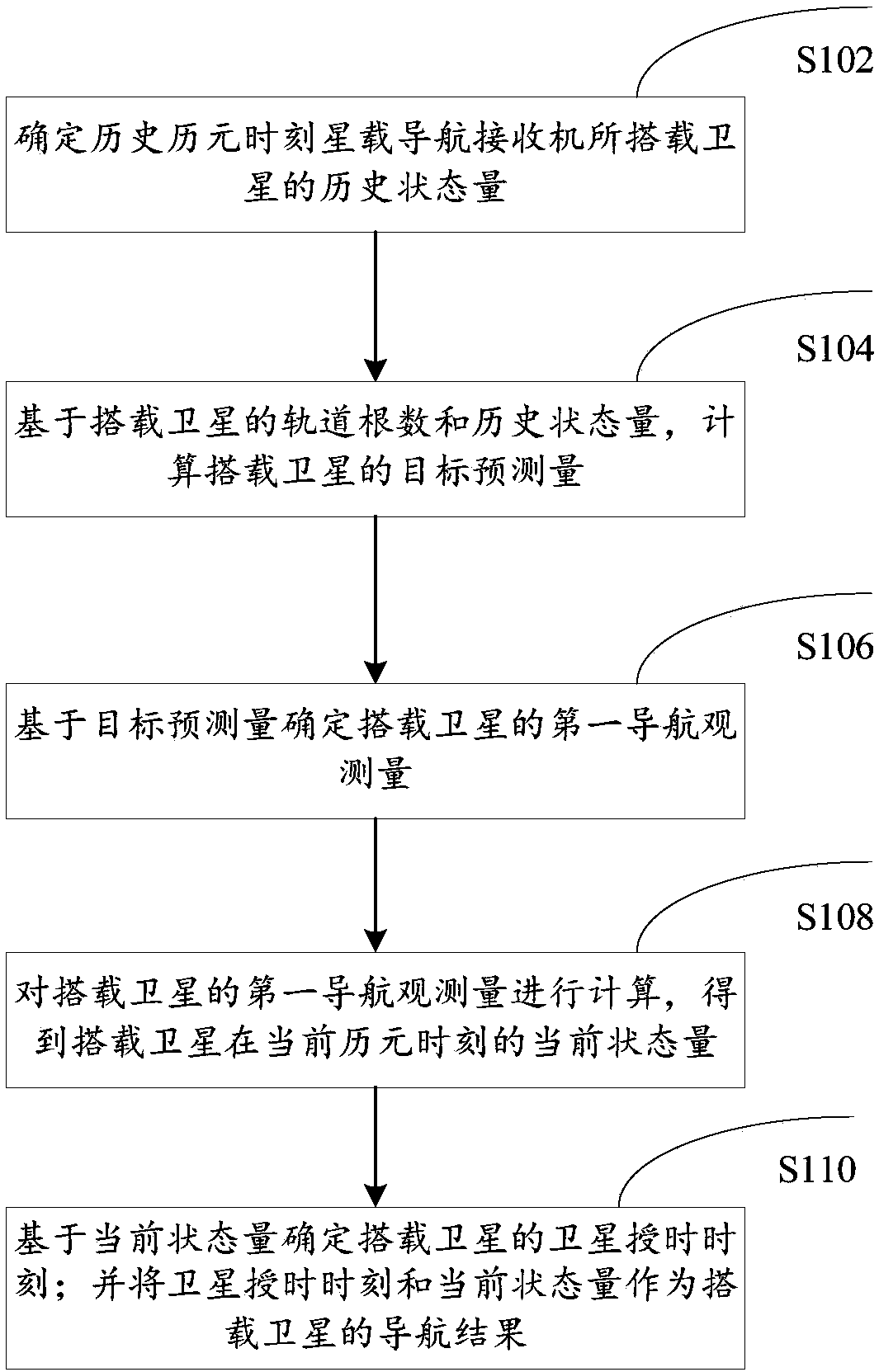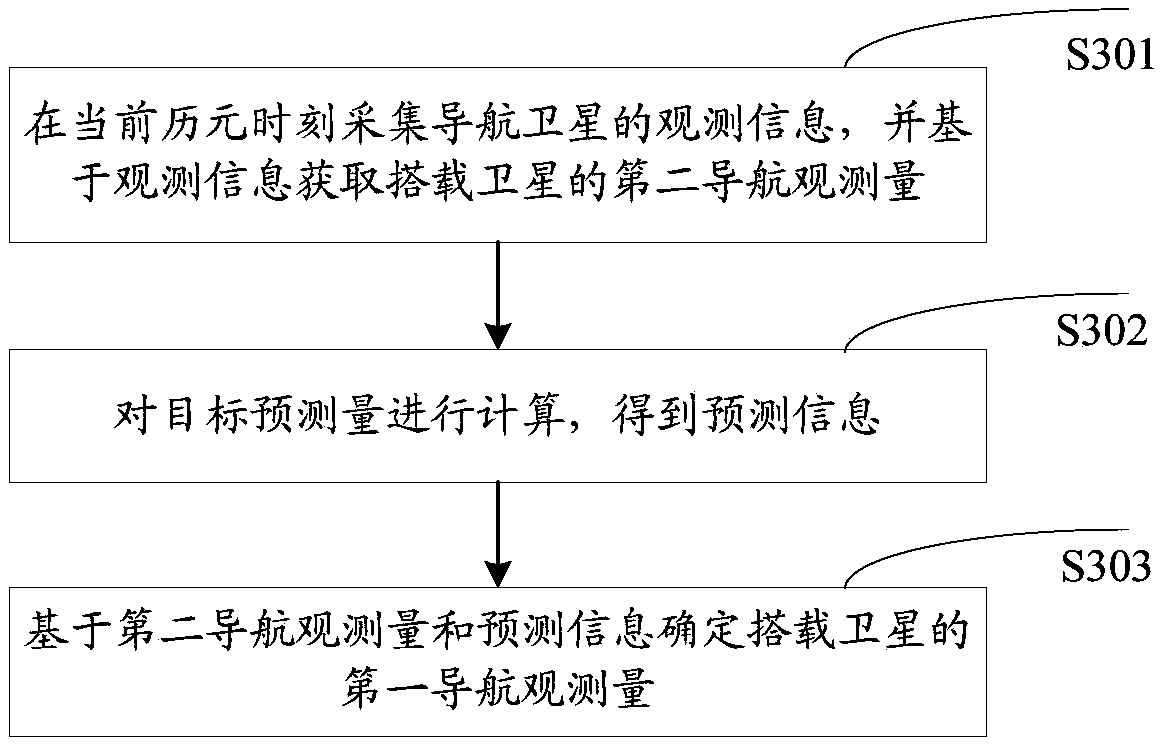Positioning and time service method and device for spaceborne navigation receiver based on orbital element prediction
A technology of navigation receiver and orbital number, which is used in measurement devices, satellite radio beacon positioning systems, radio wave measurement systems, etc.
- Summary
- Abstract
- Description
- Claims
- Application Information
AI Technical Summary
Problems solved by technology
Method used
Image
Examples
Embodiment 1
[0039] According to an embodiment of the present invention, an embodiment of a positioning and timing method for an on-board navigation receiver based on prediction of orbital elements is provided. instructions and, although a logical order is shown in the flowcharts, in some cases the steps shown or described may be performed in an order different from that shown or described herein.
[0040] figure 2 It is a positioning and timing method for spaceborne navigation receivers based on prediction of orbit elements according to an embodiment of the present invention, which is applied to spaceborne navigation receivers, such as figure 2 As shown, the method includes the following steps:
[0041] Step S102, determining the historical state quantities of the satellites carried by the on-board navigation receiver at historical epochs, wherein the historical state quantities include at least one of the following: historical position vectors, historical velocity vectors, historical ...
Embodiment 2
[0080] According to an embodiment of the present invention, another embodiment of a positioning and timing method for an on-board navigation receiver based on orbit element prediction is provided. Instructions are executed in a computer system and, although a logical order is shown in the flowcharts, in some cases the steps shown or described may be performed in an order different from that shown or described herein.
[0081] Figure 4 It is another positioning and timing method for spaceborne navigation receivers based on prediction of orbital elements according to an embodiment of the present invention, which is applied to spaceborne navigation receivers, such as Figure 4 As shown, the method includes the following steps:
[0082] S1, the on-board navigation receiver initializes the state quantity;
[0083] S2, the spaceborne navigation receiver collects navigation observations at the current epoch (that is, the second navigation observations in the above-mentioned embodi...
Embodiment 3
[0256] The embodiment of the present invention also provides a spaceborne navigation receiver positioning and timing device based on orbit element prediction, which is mainly used to implement the spaceborne navigation based on orbit element prediction provided by the above content of the embodiment of the present invention As for the receiver positioning and timing method, a spaceborne navigation receiver positioning and timing device based on orbit element prediction provided by an embodiment of the present invention will be specifically introduced below.
[0257] Figure 8 It is a schematic diagram of a spaceborne navigation receiver positioning and timing device based on orbit element prediction according to an embodiment of the present invention, as shown in Figure 8 As shown, the device mainly includes: an initial state quantity acquisition module 81, a first position and velocity calculation module 82, an observation variable transformation module 83, a second position...
PUM
 Login to View More
Login to View More Abstract
Description
Claims
Application Information
 Login to View More
Login to View More - R&D
- Intellectual Property
- Life Sciences
- Materials
- Tech Scout
- Unparalleled Data Quality
- Higher Quality Content
- 60% Fewer Hallucinations
Browse by: Latest US Patents, China's latest patents, Technical Efficacy Thesaurus, Application Domain, Technology Topic, Popular Technical Reports.
© 2025 PatSnap. All rights reserved.Legal|Privacy policy|Modern Slavery Act Transparency Statement|Sitemap|About US| Contact US: help@patsnap.com



